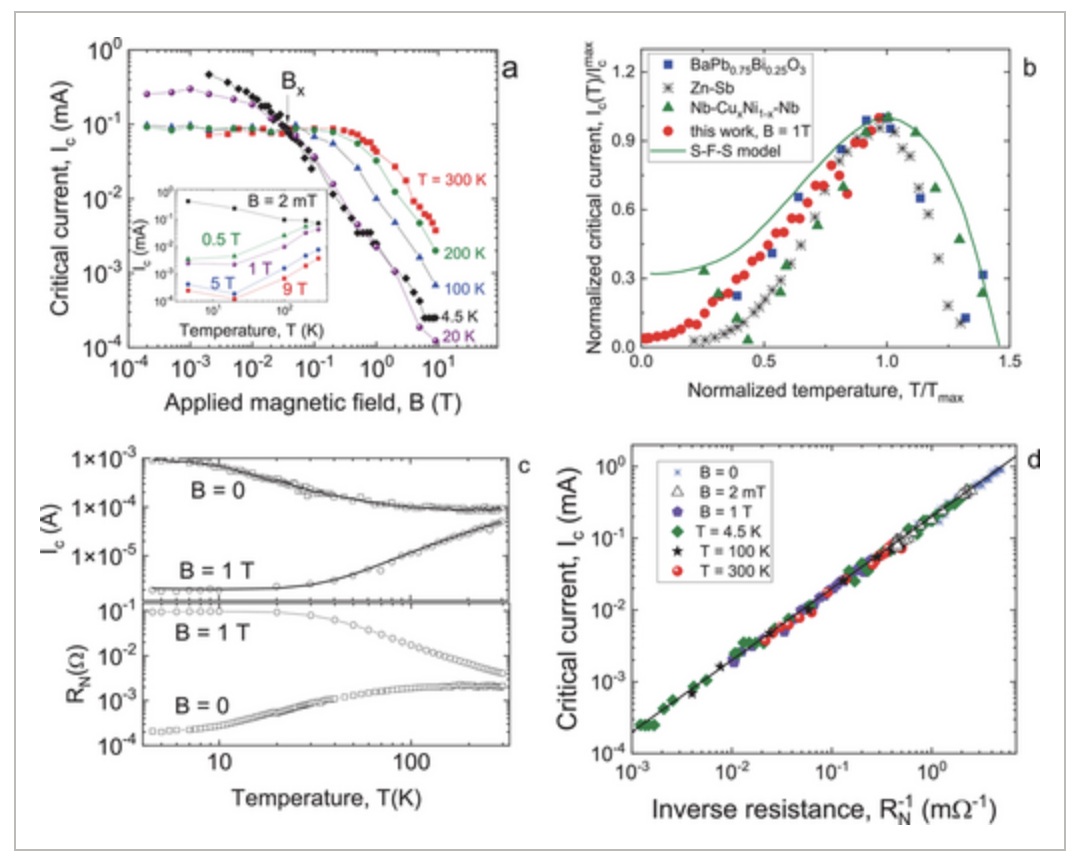Using Scotch Tape And Quantum Mechanics, Scientists See Signs of Global Room-Temperature Superconductivity in Graphite

Insider Brief
- A Terra Quantum-led team of researchers published findings on the first-ever observation of room-temperature superconductivity.
- Superconductivity is the ability of the conductors to carry the electric current without loss of power.
- The researchers used scotch tape to cleave pyrolytic graphite — a manufactured form of graphite — into thin sheets.
PRESS RELEASE — Terra Quantum, a leading quantum technology company, published in Advanced Quantum Technologies journal the first-ever observation of room-temperature superconductivity, Global Room-Temperature Superconductivity in Graphite.
Superconductivity, the ability of the conductors to carry the electric current without resistance, i.e., without power losses, was discovered in 1911 by Dutch physicist Heike Kamerlingh Onnes. His observation that at 4.2 K the resistance in a solid mercury wire immersed in liquid helium suddenly vanishes, which he immediately reported to the Royal Netherlands Academy of Arts and Sciences, was recognized by the 1913 Nobel Prize in Physics. Kamerlingh Onnes’ discovery opened a new epoch in human history.
In about thirty years, it was realized that superconductivity, which is also characterized by the Meissner effect, the complete cancelation of the magnetic field in the interior of the superconductor, is a macroscopic quantum state; thus, this discovery stimulated the development of quantum mechanics, which is the foundation of today’s science and knowledge about nature. Yet, the models of superconductivity predicted that one could hardly expect it to happen above approximately 20 K.
Then, the discovery of what was called “high-temperature superconductivity” in 1986 (Georg Bednorz and Alex Müller, 1987 Nobel Prize), the superconductivity above 77 K, put the next puzzle that had been remaining unresolved till recent work by Terra Quantum’s Chief Technology Officer Professor Valerii Vinokur together with Cristina Diamantini (University of Perugia) and Carlo Trugenberger (SwissScientific Technologies).
Now, the research led by Prof. Vinokur and Professor Yakov Kopelevich, with co-authors from the Universidade Estadual de Campinas, University of Perugia, and SwissScientific Technologies, discovered superconductivity at room temperatures. The hope that was viewed as a fairy-tale story became a reality.
“Our work is an experimental discovery that humankind has been waiting for about a hundred years since the first observation of superconductivity in mercury,” said Prof. Valerii Vinokur.
“This discovery made by our scientific team with our academic and industry partners opens the door to spectacular advances in superconducting technology. Room-temperature superconductivity opens a gateway to transformative advancements across industries,” said Markus Pflitsch, Terra Quantum founder and CEO. “Imagine power grids almost free of energy loss, revolutionizing our approach to electricity transmission. In healthcare, enhanced MRI technologies will emerge, offering unprecedented diagnostic precision. Transportation will leap forward with energy-efficient, high-speed magnetically levitating trains. Electronics will enter a new era of miniaturization and power efficiency.”
“The emerging field of quantum computing will benefit enormously since the qubits that now operate only at 10–20 mK can come to room temperature functioning. Thus, the things that were viewed as futuristic dreams have become a reality,” added Prof. Vinokur.
Pyrolytic graphite is a manufactured form of graphite. The research team at Universidade Estadual de Campinas, led by Prof. Kopelevich, used scotch tape to cleave this graphite into thin sheets. These sheets were covered by dense arrays of wrinkles in nearly parallel lines. The geometry of these wrinkles causes electrons to pair up into structures that allow superconducting currents to flow along the wrinkles.
The mechanism leading to superconductivity along the one-dimensional defects has been explained by C. A. Trugenberger, M. C. Diamantini, and V. M. Vinokur. Strain fluctuations within these defects can be described by effective topological gauge fields, which mediate an attractive potential causing electrons within droplets in the defects to pair up and Bose condense. The very thin dimension of these droplets leads to a very robust ground state for these pairs. The condensate droplets form an effective Josephson junction array on the surface of graphite, which freezes in its topological Bose metal state, with residual conduction on the edges formed by the defects. On these defects, quantum phase slips typically cause dissipation. However, because of dimensional soldering with the two-dimensional surface and the three-dimensional bulk, quantum phase slips are just the tips of bulk vortices moving on the surface. Because of the very small resistance of the bulk, the motion of these vortices is suppressed, together with quantum-phase-slips-induced dissipation on the defects. So, these defects turn superconducting.
